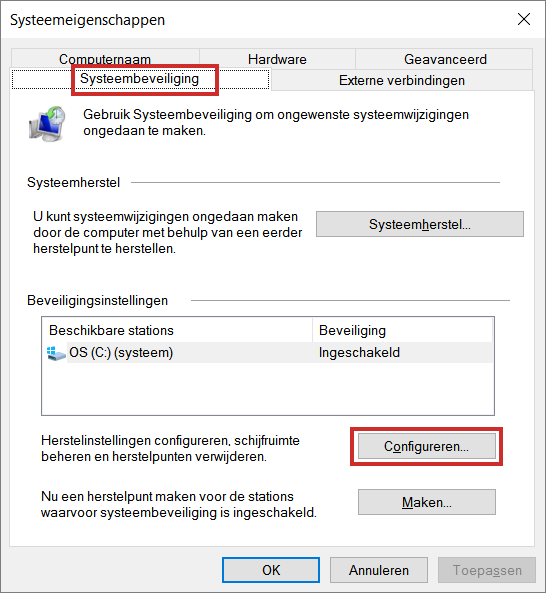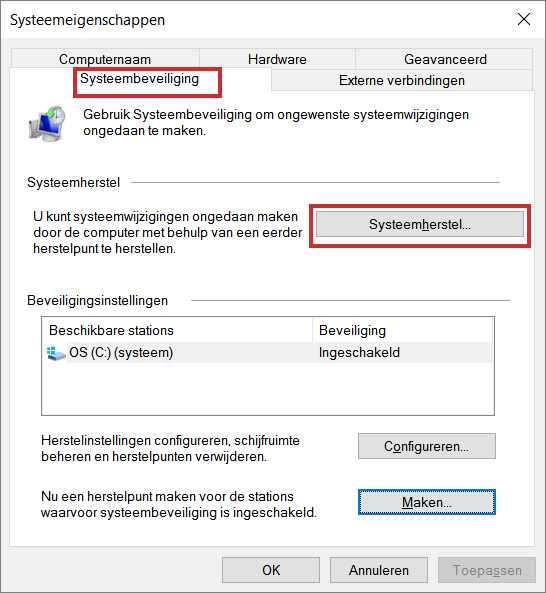
Computer problems, such as slowness and crashes, are often caused by recently installed programs. Take your Windows computer back in time with Windows System Restore. The problems might just disappear.
What is System Restore?
The term “System Restore” means to restore the computer to an earlier time when there were no problems. Windows System Restore takes a kind of picture of the state of the computer at certain times. We call this a restore point. The programs and settings of the computer are recorded. In case of computer problems, you can revert to a previously created snapshot. So to the settings and programs from then. Problems that have arisen in the meantime can thus be undone.
When do you use System Restore?
System Restore is a horse cure. It is always best to look for other solutions that are less intrusive first. Do you think the PC is infected with a virus? Then let the virus scanner make a full scan of the computer and remove the found culprit. The problems may then be over. Is the computer very slow after installing a new app? Then remove the app via the Settings.
There is a “but” to System Restore. It is a record of a moment. Apps installed since the restore point will not be there. After System Restore, you will need to download it again. Documents, emails, and photos are generally unaffected and preserved. If you have accidentally deleted a document, there is no point in performing a system restore. It is therefore wise to always have a backup of the documents on another medium, such as an external hard drive or USB stick.
Check System Restore Operation
Most computers automatically create restore points to which the computer can be restored. But it’s good to know if System Restore actually works and is enabled on the computer. Enable this feature if necessary.
- Open the Windows search function via the magnifying glass in the Taskbar.
- Type ‘Control Panel’. click on Control Panel.
- click on System and Security (if you don’t see this, click on the top right first) View by Category).
- click on System > Advanced System Settings.
- Click on the tab System Security.
- Your hard drives are listed under the ‘Available drives’ heading. Behind the hard drive it says ‘turned on or off’. “Enabled” means System Restore is active. You don’t have to do anything else. If it is not active, it will be indicated as ‘Disabled’. In this case, click on the disk.
- Press the button Configure.

- Under “Recovery Settings” select Enable System Security.
- Move the slider under “Disk space usage” to 10 percent.
- click on To apply > OK > OK.
Create a restore point manually
System Restore is now active and creates a restore point for major computer changes. But to make sure you have a recent restore point, you can manually create a restore point before making any major changes.
- Open the Windows search function via the magnifying glass in the Taskbar.
- Type ‘Control Panel’. click on Control Panel.
- click on System and Security (if you don’t see this, click on the top right first) View by Category).
- click on System > Advanced System Settings.
- Click on the tab System Security.
- Press the button To make.
- Enter a name for your restore point in the entry field, for example ‘Installation of a new virus scanner’. Choose a good description so that you can easily find the correct restore point during a possible recovery process.
- click on To make.
- click on Close > OK.
Restore System Restore Point
Is your PC no longer booting properly? Then you have to restore it in another way. Read more about it on Microsoft’s site. Does the PC still start up, but is there something wrong with it all of a sudden? Then use System Restore like this:
- Open the Windows search function via the magnifying glass in the Taskbar.
- Type ‘Control Panel’. click on Control Panel.
- click on System and Security (if you don’t see this, click on the top right first) View by Category).
- click on System > Advanced System Settings.
- Click on the tab System Security.
- click on System recovery.

- click on Next one and possibly on View more restore points.
- Windows displays the latest system restore points. Each restore point contains the date/time and description. Click on the restore point you want to restore.
- click on Search for programs that are affected.
- Windows will indicate what the consequences will be for your files if you restore the chosen restore point. Read this screen carefully. click on Close.
- Are you sure you want to restore the restore point? Then click on Next one.
- click on Complete.